|
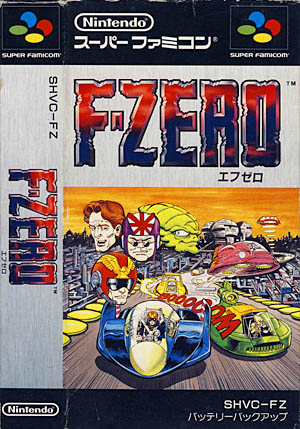
|

|
|
エフゼロ
©1990 Nintendo
Release: 1990-11-21 (¥7000)
Cartridge SHVC-FZ
Racing game



|
Released in America as
F ZERO
( SNSP-FZ-USA )
( SNS-FZ-USA-1 )
|


|
Released in Europe as
F ZERO
( SNSP-FX-XXX )
|
|
F-Zero is a fast and futuristic hover-craft racing game by
Nintendo and was one of the launch title for the American
Super Nintendo system. The game takes place in the 26th century,
humans and aliens now share the universe and seek for new kind of
entertainments. The high-speed race called F-Zero was created
for that matter and became increasingly popular. Four pilots and their
respective hover-crafts are available from the start, each one of them
balancing out Power, Speed and acceleration. The game
features not less than fifteen tracks all scattered around nine areas such as
Myūto Shiti (Mute City), Biggu Burū (Big Blue), Sando Ōshan (Sand Ocean),
Desu Uindo (Death Wind), Sairensu (Silence),
Howato Rando (White Land) and Pōto Taun (Port Town).
Tracks are also grouped into three leagues (Knight, Queen and King)
with various difficulty levels. More than racing their vehicles in an effort
to cross the finish line, players also have to take care of land mines scattered
around the tracks, holes or powerful magnets that dramatically affect their driving.
Thankfully, turbo-boosts are available and can be used to avoid some
of those hazards. A power shield bar is constantly displayed on the screen
and decreases as the vehicle gets hit or goes out of the track.
The only way to refill it is to drive over special pit-stop areas on the
track which will slowly regenerate the precious magnetic field. The game
features many surprises, such at the strong wind blowing on Death Wind,
split ways or the super-start trick that unleashes a special speed-boost at the start of
each race.
|
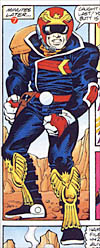 F-Zero was one of the first game to use the excellent Mode 7,
native hardware feature included with the Super Famicom and allowing
incredible real-time sprite deformation effects. The game came out in 1990 in Japan
and was produced by Shigeru Miyamoto and directed by Kazunobu Shimizu.
Interestingly, a sequel was actually released for the Satellaview in 1997
and called BS F-Zero 2 and no cartridge version of this game exists for that matter.
The same applies to later editions called BS F-Zero Ace League,
BS F-Zero Knight League, BS F-Zero King League and
BS F-Zero Queen League.
The game also introduced Captain Falcon (pictured on the left). The
Super Famicom game even comes with a eight pages comic book
story included at the end of the game's manual (see the Omake section
on this page). The style of the
drawing is really unusual for a Japanese game and looks more
like an American comic book (and it is surprisingly all in English,
even in the Japanese manual!). I wonder if Nintendo didn't do that
on purpose to catch a wider audience and make the game a bit more US
and Europe 'friendly'.
A sequel of F Zero came out in 1998 for the
Nintendo 64 and called F-Zero X. Then
F-Zero: Maximum Velocity (GameBoyAdvance, 2001) and
F-Zero: GP Legend (GameBoyAdvance, 2003) followed.
F-Zero was one of the first game to use the excellent Mode 7,
native hardware feature included with the Super Famicom and allowing
incredible real-time sprite deformation effects. The game came out in 1990 in Japan
and was produced by Shigeru Miyamoto and directed by Kazunobu Shimizu.
Interestingly, a sequel was actually released for the Satellaview in 1997
and called BS F-Zero 2 and no cartridge version of this game exists for that matter.
The same applies to later editions called BS F-Zero Ace League,
BS F-Zero Knight League, BS F-Zero King League and
BS F-Zero Queen League.
The game also introduced Captain Falcon (pictured on the left). The
Super Famicom game even comes with a eight pages comic book
story included at the end of the game's manual (see the Omake section
on this page). The style of the
drawing is really unusual for a Japanese game and looks more
like an American comic book (and it is surprisingly all in English,
even in the Japanese manual!). I wonder if Nintendo didn't do that
on purpose to catch a wider audience and make the game a bit more US
and Europe 'friendly'.
A sequel of F Zero came out in 1998 for the
Nintendo 64 and called F-Zero X. Then
F-Zero: Maximum Velocity (GameBoyAdvance, 2001) and
F-Zero: GP Legend (GameBoyAdvance, 2003) followed.
|
G
O
O
D
I
E
S
|
|
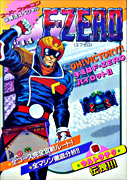
Japanese Guide Book
|
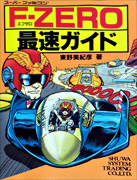
Japanese Guide Book
|
|
|
O
M
A
K
E
|
|
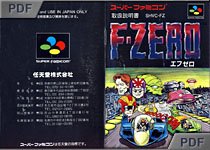
|
|
|
Click on picture to enlarge |
|
|
|
LK

|
|
Add your Pov here !
|
P
O
V
s
|
|
F-Zero is simply amazing. It displays great graphics and a fast and flawless
animation without any slowdowns. The game certainly offers some of the most
amazing Mode 7 action ever made. F-Zero has incredible and flawless controls
and makes great use of the shoulder buttons. Like with Mario Karts,
F-Zero is easy to get into and beginners as well as novices can enjoy
every single race equally.
The game also has a lot of replay values with tons of secrets to discover.
F-Zero is, once again, Nintendo at its finest.
I only wished Captain Falcon didn't look that goofy...
The game looks a bit aged compared to today’s racers (especially the bad
aliasing going on in the distance) but it has kept
its incredible feeling of speed and offers an amazing gameplay.
A great title.
|
|
|
|